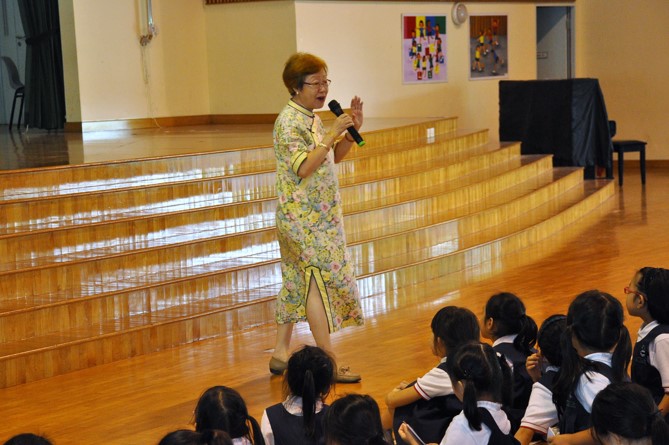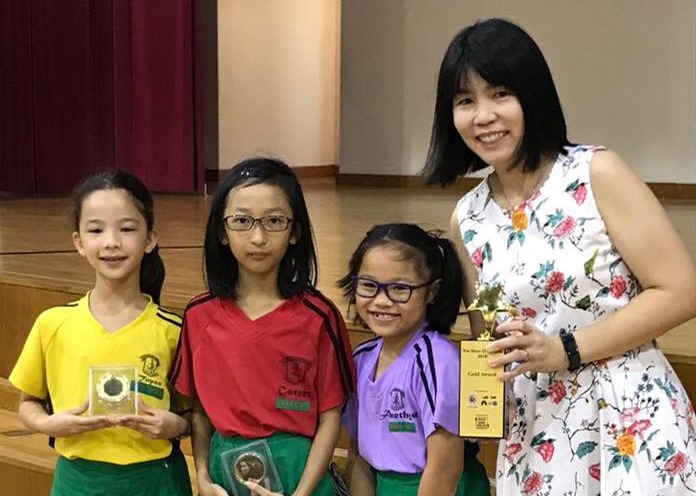The first thing veteran educator Miss Tan Siok Cheng does when she enters a room is to look for an escape route.
It’s an instinct honed from the days when, as a young girl, she was traumatised by the civil unrest in her native Indonesia and the racial riots of 1964 in Singapore. She feels re-assured when she spots an exit.
“I remember in particular the room I was working in at the old National Institute of Education’s campus, when I was posted to the Curriculum Development Institute of Singapore,” she says. “I was very happy because there was a front door and a back door, so if need be I can escape through the back door which opened to a garden!”
Miss Tan, 69, is quick to clarify that nothing untoward happened to her or her family members. But the atmosphere of vigilance and the need to be prepared that she grew up with forever sharpened her attitude toward safety and emergency preparedness in life and in her schools.
Living with soldier neighbours
Around the time Miss Tan was born in 1947 in Medan, Indonesia, a four-year revolution in Indonesia by the people against their Dutch colonial masters resulted in independence, a period of peace and a protracted period of unrest. At the time, Chinese businessmen like her father, who ran an import-export business, had to deal with the possibility of intimidation, kidnapping and robbery.
As a young child, Miss Tan herself was perhaps unaware of the danger. But on hindsight, she says the actions of her mother spoke a thousand words.
“My mother only allowed us to step out of the house to get into the car. We weren’t even allowed to walk on the road,” she recalls. “I used to see my mother cry – she was afraid my father would be detained.”
There were weapons-toting soldiers who lived nearby and even though the house was always locked, the gates could be opened and the soldiers would use the family’s driveway as a shortcut. “My mother once saw hand grenades and she was terrified.”
The house was surrounded by walls with glass shards on top, and her father created a door at the back so the family could escape if need be. Within the house, there was also what she calls a “James Bond”-like bomb shelter which could be entered via a hole at the back of her grandfather’s closet.
While the family was unscathed, they saw friends’ property and cars being abused. For instance, soldiers took a friend’s car for joyrides and those who had big houses with bedrooms to spare would suddenly find soldiers and their families living under the same roof, on occasion.
Miss Tan’s parents filled their own home with bric-a-brac so it looked like each room was occupied by someone, even if it wasn’t. “It was quite lawless,” she says. “I was very well-protected but hearing about the violence affected me.”
Her father decided that the family should move to Singapore for the children’s education in 1959, when Miss Tan was aged 12.
Riots and Curfews
After just five years in Singapore, however, the family encountered the Singapore racial riots of 1964, which were clashes between the Chinese and Malays.
During the 21 July 1964 fracas in which a religious procession marking the birthday of the Islamic prophet Muhammad turned violent, the then-teenager was at home, a Tanjong Katong semi-detached house.
“My neighbour told me to go in quickly and lock the door as people were fighting. I peeped from my gate to the road, I saw a lot of Malay boys who were from the madrasah or mosque running down the road,” she says.
Their home was stocked with rice and other food provisions, in event of an emergency.
Miss Tan, then studying at the Raffles Girls’ School, also remembers bomb scares at the school premises at Orange Grove road. During the first, the girls evacuated their classrooms and had to wait at the school garden where they started singing to pass the time.
“Our principal Evelyn Norris was quite pleased with us for being so calm, well-behaved and cheerful, and praised us at the next Assembly!”
The second racial riot was more dramatic. Miss Tan was in the middle of a Biology exam practical and had a fish in front of her, when the announcement was made for all students to go home immediately as a curfew was in place.
“We were still desperately writing. Then Ms Norris jumped in and yelled at all of us to throw away our fish and go down to wait for our parents who would come to pick us up.” Dismissing the female teachers and keeping the only two male teachers to help her, the principal oversaw the evacuation of all students before leaving.
Post-riots, Miss Tan went on to graduate with a degree in Botany and Zoology from the University of Singapore and decided to teach in 1970.
She taught Biology at St Joseph’s Institution for 13 years, and spent another 13 years developing science-teaching materials at the Curriculum Development Institute of Singapore. She also spent two years at the Education Technology Division, in the IT training branch.
Paranoid about safety
However, it was only during her last decade as principal of Raffles Girls’ Primary – when she had to be responsible for the safety of hundreds of girls – that the self-preservation instincts honed during her early life came to the fore.
“RGPS had all these little girls,” she says. “I was almost paranoid for the safety of the students.”
Although the students’ security was never threatened during her decade at RGPS, she made sure the school teachers and students were well-prepared, on top of the routine fire and emergency drills.
“We had contingency plans A, B and C. Plan A was to assemble at the quadrangle, plan B to go to the field at the back and plan C was to evacuate to the National Junior College nearby!” Miss Tan recalls. She made it a point to brief the teachers on safety matters during their contact time.
A “key collection” and “information relay” system was also put in place so everyone would automatically know what to do without having to ask questions. “Everything was very meticulously planned,” she says.
These days, she views the careful emergency preparedness plans which the schools adhere to with a smile. “There is nothing wrong with being overly careful. Every child is precious and I think it’s good that security has been stepped up.”
To her, the most priceless moments are not only when her students graduate safely from school, but also when they say ‘thank you’. “Our reward as teachers is – we don’t look for anything. It’s when students say, ‘thank you very much’, and they remember you, then my results are good.
“During one Teacher’s Day at RGPS, a girl gave me a rose, because she said once she fell down and I had cleaned her knee for her. I didn’t remember it, but that’s good, that’s nice.”






